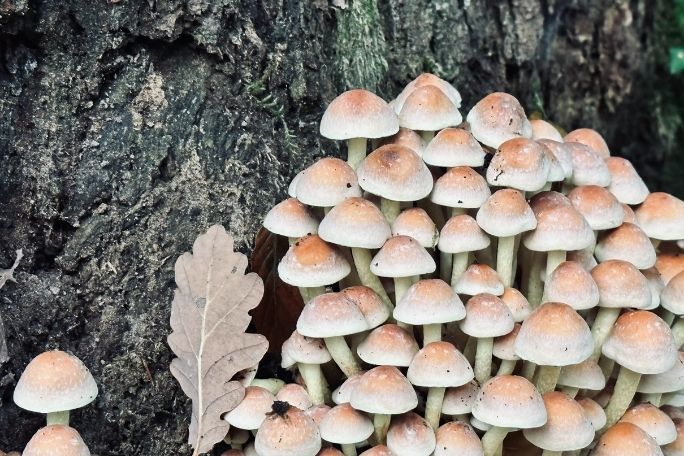Lesson summary
Students use their observation skills in a structured way to explore our environment. In this activity your class will explore some of the amazing colours, shapes, patterns and textures that can be found in nature. The class will take a walk around the school or a nearby park, spotting as many colours as they can, observing the different shapes and patterns found along the walk, and feeling the different textures of a variety of objects along the walk. This activity is adapted from Sharing Nature with Children.*
Learning intentions:
Students will...
- use observation skills and the senses, students describe, compare and sort colours, shapes, textures and pattern of natural objects.
Lesson guides and printables
Curriculum links
Select your curriculum from the options below.
Lesson details
Curriculum mapping
Australian Curriculum content descriptions:
Year 1 Mathematics:
- Recognise and classify familiar two-dimensional shapes and three-dimensional objects using obvious features (ACMMG022)
- Measure and compare the lengths and capacities of pairs of objects using uniform informal units (ACMMG019)
Year 1 Science:
- Use a range of methods to sort information, including drawings and provided tables (ACSIS027)
Year 2 Mathematics:
- Compare and order several shapes and objects based on length, area, volume and capacity using appropriate uniform informal units (ACMMG037)
- Describe the features of three-dimensional objects (ACMMG043)
Year 2 Science:
- Use a range of methods to sort information, including drawings and provided tables (ACSIS040)
Syllabus Outcomes: ST1-4WS, MA1‑1WM, MA1‑2WM, MA1‑3WM, MA1-9MG, MA1-10MG, MA1-11MG, MA1-14MG, MA1-15MG.
Resources required
- One average size shopping bag
Additional info
This is an original Cool.org lesson. Facts and figures in these lessons may have changed since this lesson was published. We always endeavour to update our resources in a timely manner, but if you see an error or issue in our resources please get in touch with us.


Welcome back!
Don't have an account yet?
Log in with:
Create your free Cool.org account.
Many of our resources are free, with an option to upgrade to Cool+ for premium content.
Already have an account?
Sign up with:
By signing up you accept Cool.org's Terms and Conditions(Opens in new tab) and Privacy Policy(Opens in new tab).